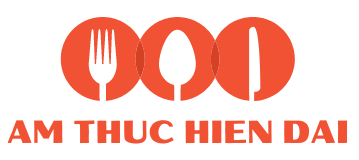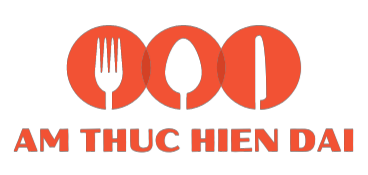I was born and have spent the majority of my life in Alsace, and local wine has always been meaningful to me.
My memories of drinking Champagne are sparse, as Crémant d’Alsace was invariably chosen for occasions requiring bubbles.
Similarly, in my family, Foie Gras has almost always been accompanied by a Gewurztraminer (Late Harvest).
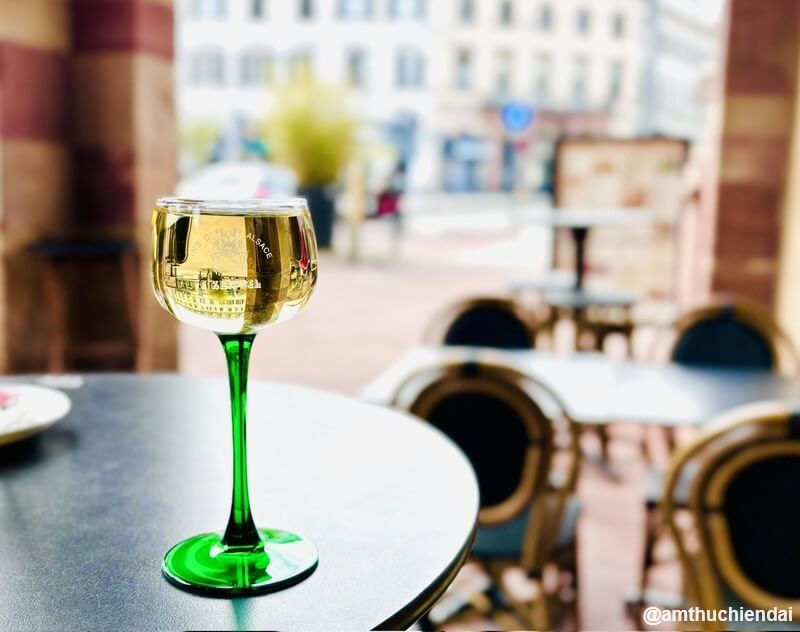
Admittedly, this article might display a bias towards the wines of my own native region. My aim here is not to compare them with wines from other regions of the world.
In this article, I intend to provide you with some starting points that will help you understand what to expect from these wines and the culture surrounding them.
1. One of the smallest and maybe the most underrated French Wine area?
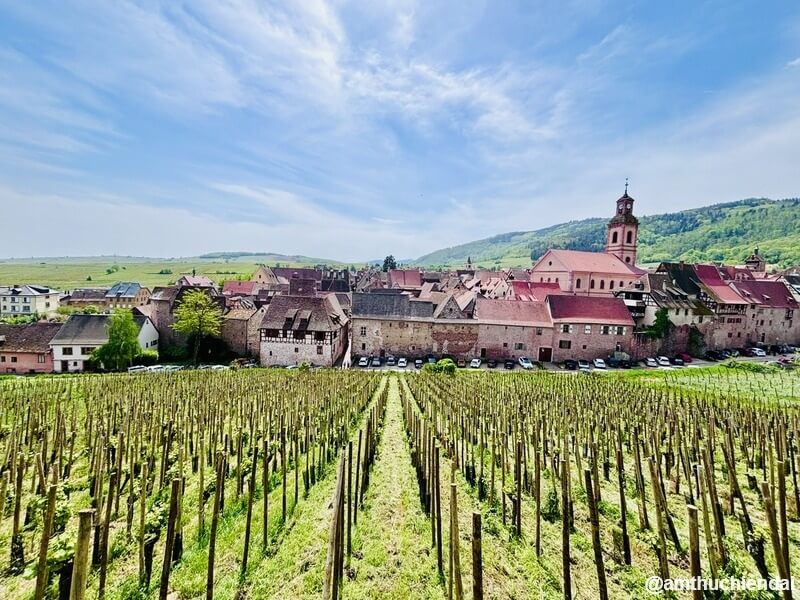
If you have never tasted Alsace wine before, it’s likely not due to a lack of quality but rather its smaller international presence.
This isn’t surprising given that:
- Alsace wine accounts for only 2.5% of French wine production.
- Wines from Bordeaux or Burgundy have historically been more renowned both in France and internationally.
This doesn’t mean that Alsace wine should be overlooked!
The whites from Alsace can be exceptional. The overall quality of wine produced in Alsace has been consistently improving over the past decades, and there have been concerted efforts to increase exports.
2. White wines only?
The main specialty of Alsace wine is white, and the region has established its reputation on this. Whites comprise 90% of Alsace’s current wine production.
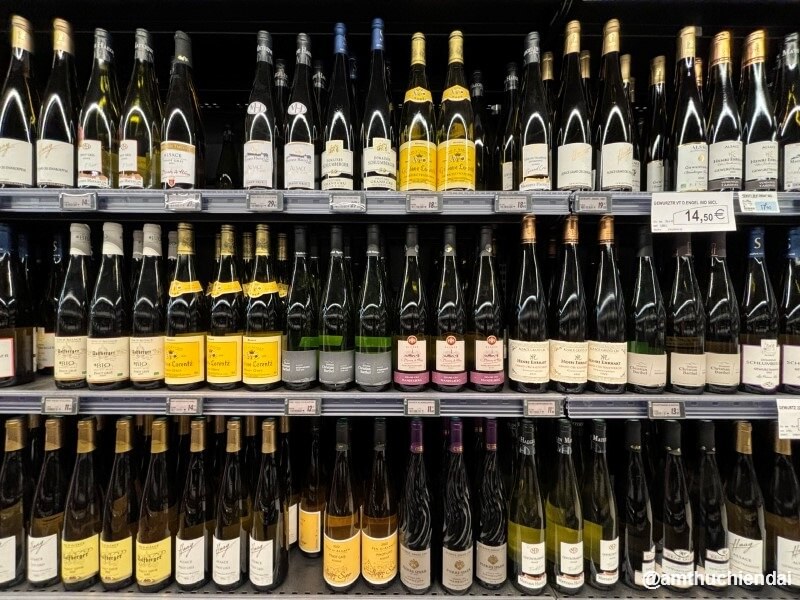
The most renowned grape varieties from Alsace are:
- Riesling
- Gewurztraminer
- Pinot Blanc and Gris
- Muscat

A notable feature is that the grape varieties are listed on the label of all wine bottles from Alsace, a practice not commonly found in other French wine regions.
Riesling, in particular, has earned the most recognition both in France and internationally.
This does not imply that Alsace Red Wines should be overlooked. We have tasted great Pinot Noir from Alsace.
Let’s also highlight the Sparkling wines: They are available under the Appellation Crémant d’Alsace and are equally excellent.
We are currently working on a detailed guide on the various wines you can find in Alsace and explain the different Appellations, including what sets them apart.
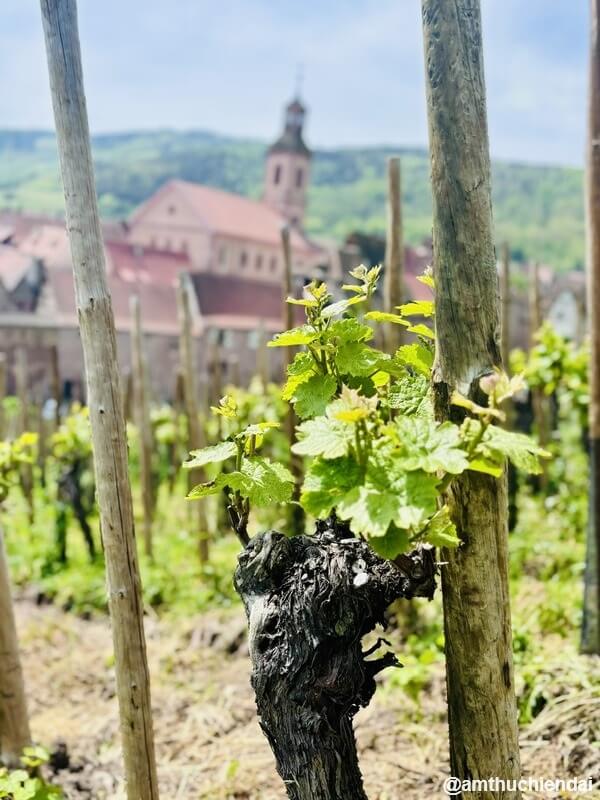
3. Wine on the Sweet side?
When discussing white wines from Alsace, it’s common to hear that these wines are sweet. While there’s some truth to this, the full picture is more complex.
Indeed, a segment of Alsace’s white wine production is known for its sweetness, categorized under three appellations:
- VT (Vendanges Tardives) Late Harvest: Wines from grapes picked several weeks after the standard harvest season, leading to higher sugar concentration.
- Noble Grain Selection: Grapes affected by Botrytis Cinerea, a fungus that dehydrates the grapes, increasing their sugar level.
- Ice Wine: Made from grapes naturally frozen on the vine, requiring temperatures to fall to at least -7°C (19°F).
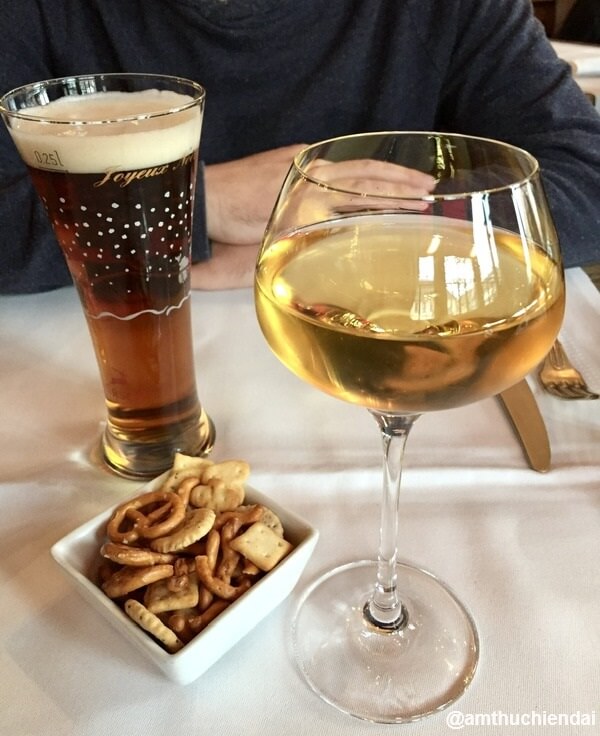
Yet, apart from these specialized categories, Alsace wines offer a full spectrum of sweetness levels, including dry options.
For Huong and me, dry Alsace Riesling ranks among our favorite wines!
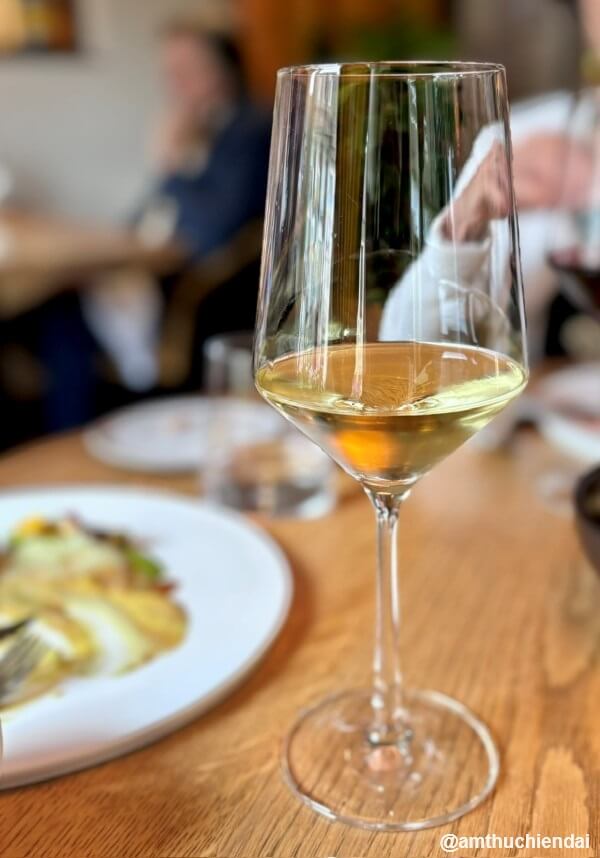
If you’re unsure about your sweetness preference when choosing a wine, the label is your best guide. Alsace wines now feature sweetness indicators to align with new European standards.
For ‘regular’ wines, appellations are: sec, demi-sec, moelleux, and doux (driest to the sweetest)
For Crémant d’Alsace (Sparkling), labels will show brut, sec, or demi-sec (driest to the sweetest)
4. Terroir
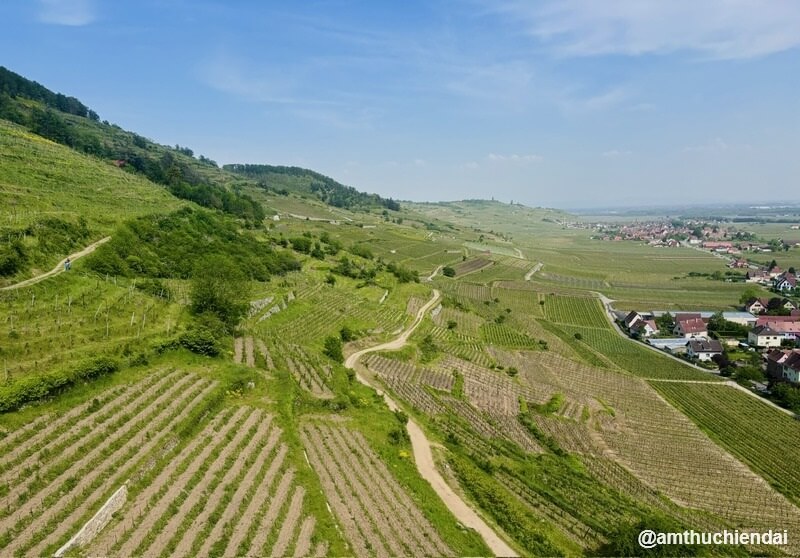
Alsace wine is cultivated on the eastern flanks of the Vosges Mountain chain, which enhances the quality of Alsace wines in three distinct ways:
- The weather is relatively dry since much of the precipitation coming from the west (the ocean) is blocked by the Vosges.
- The southeastern exposure of the vineyards ensures abundant sunshine and warmth during the summer and fall, while the nights remain cool.
- The soil boasts an extraordinary diversity, reflecting a remarkable and turbulent geology. The Alsace valley was formed millions of years ago when the Rhineland mountain range collapsed, creating a geological patchwork. Today’s vineyards thrive atop this rim, drawing from this diverse soil.
This unique combination of climatic and geological factors contributes significantly to the distinctive quality of Alsace wines.
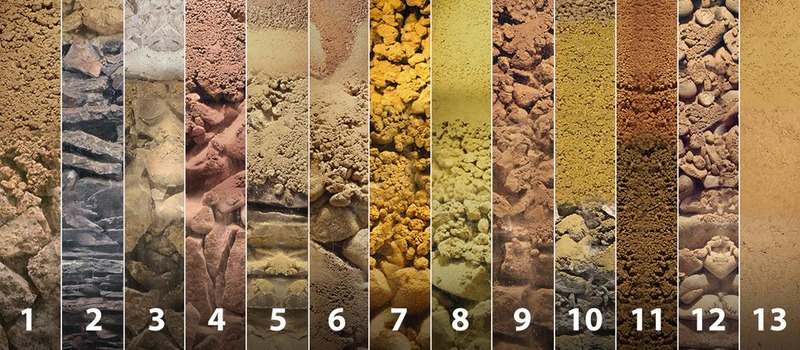
5. A complex history
To fully appreciate Alsace wine, it’s essential to delve a bit into the region’s history.
Wine production in Alsace dates back to the 1st century BC, during the Roman occupation. Local wine producers claim that the quality of the wine was so highly regarded at that time that Emperor Domitian ordered a partial destruction of the region’s vineyards to protect Italian wine producers.
The character of Alsace’s wine production was also significantly influenced by the German occupation from 1871 to 1918 (and briefly between 1939 and 1945). This period introduced new grape varieties and techniques to Alsace but also led to a decline in quality.
This historical backdrop has given Alsace wines a distinctive identity, setting them apart from any other French wine region.
6. Alsace wine nowadays : A growing reputation
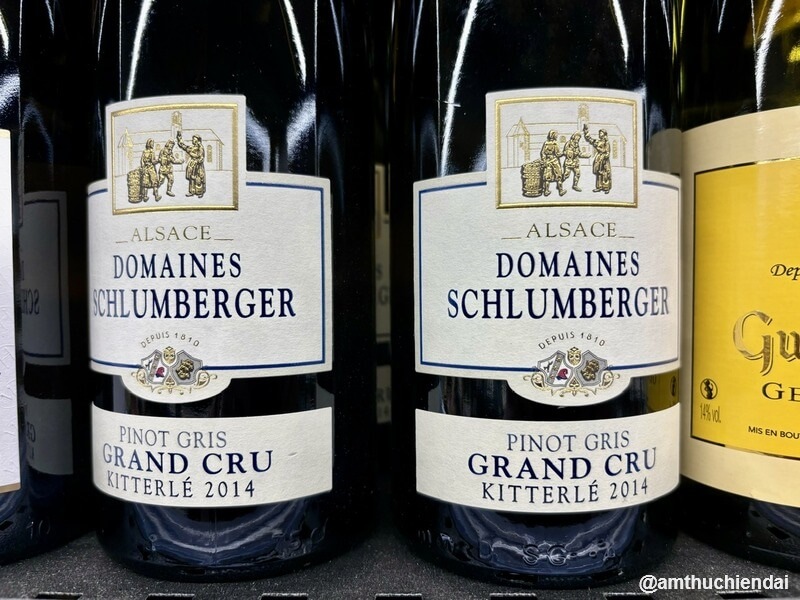
What truly shaped the current wine landscape in Alsace was the continuous progress made since the end of the Second World War in 1945. The local production was reorganized around a clear objective: to prioritize quality over quantity.
This might seem like an obvious choice now, but many wine regions in France did not adopt this approach. For instance, about 10% of the vineyards in the Bordeaux area are being removed to prevent overproduction, a problem Alsace does not face.
Several factors have contributed to the improvement in both quality and reputation of Alsace wines over the past decades:
- A comprehensive system of AOC (Appellation d’Origine Contrôlée) that governs 90% of Alsace white wine production with strict rules and specific guidelines.
- Additionally, 51 terroirs recognized for their quality are authorized to produce Grand Crus, the most celebrated wines of the region, accounting for only 5% of its production.
- Another advantage is that Alsace’s finest wines remain very affordable compared to their equivalents in Burgundy or Bordeaux. While this holds true in France, unfortunately, the selection available in Vietnam is still costly and limited.
- Most importantly, a significant number of Alsace winemakers have been shifting towards environmentally friendly production methods, using fewer or no chemicals. This not only benefits the health of those working or living near the vineyards but is also seen by many as an essential step towards further improving the wine quality.
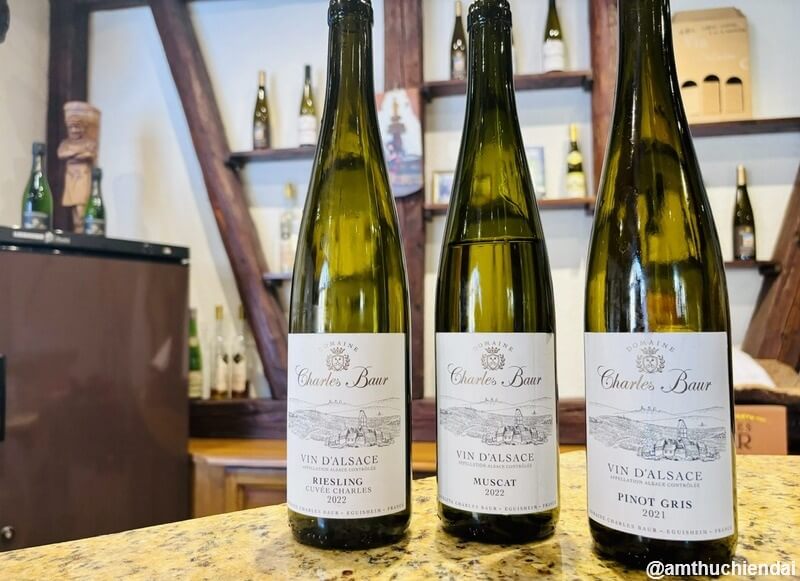
7. More than wine, a great area to visit
I don’t view wine as a ‘standalone’ experience.
Wine captures the essence of the area where it’s grown, and Alsace wines are fortunate to be cultivated in one of France’s most picturesque regions.
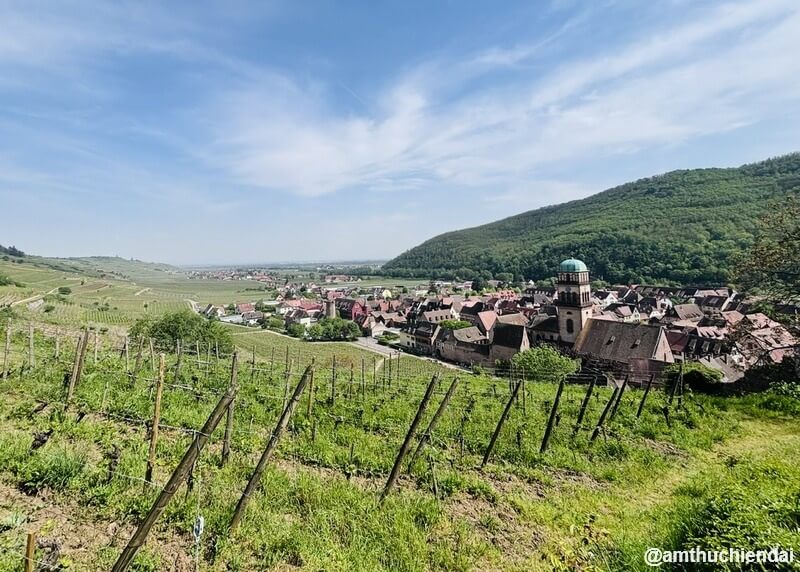
For those who enjoy pairing wine tasting with sightseeing, Alsace is an ideal destination. The villages dotting the eastern slopes of the Vosges, surrounded by vineyards, rank among France’s most beautiful.
These villages are interconnected by the renowned ‘wine road,’ accessible by both car and bicycle, offering a scenic route through the heart of Alsace’s wine country.
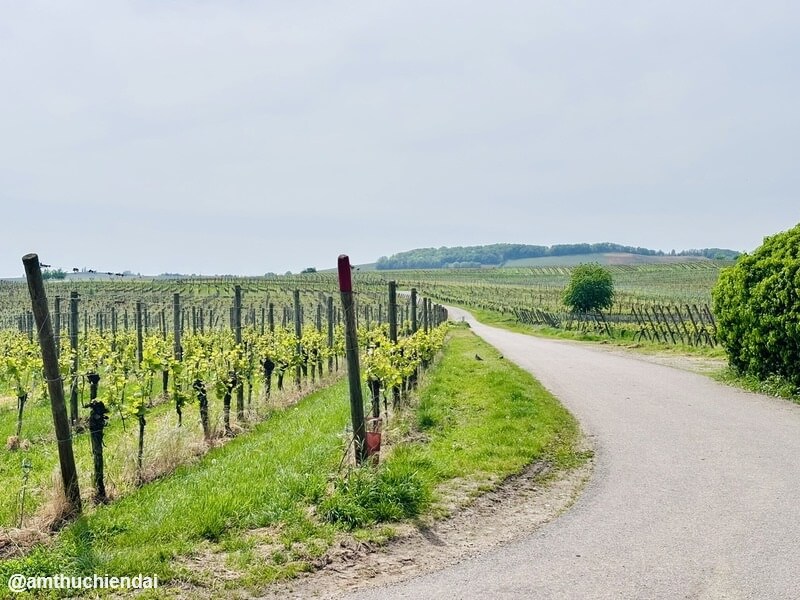
While numerous villages merit a visit, some of the most celebrated include:
- Kaysersberg
- Riquewihr
- Ribeauvillé
- Eguisheim
- Bergheim
Though not a village, Colmar also lies along the Wine Road and is a stunning city worth exploring. The city is home to excellent restaurants and wine bars, providing ample opportunities to make your wine experience truly complete. It is also considered the wine capital of Alsace!
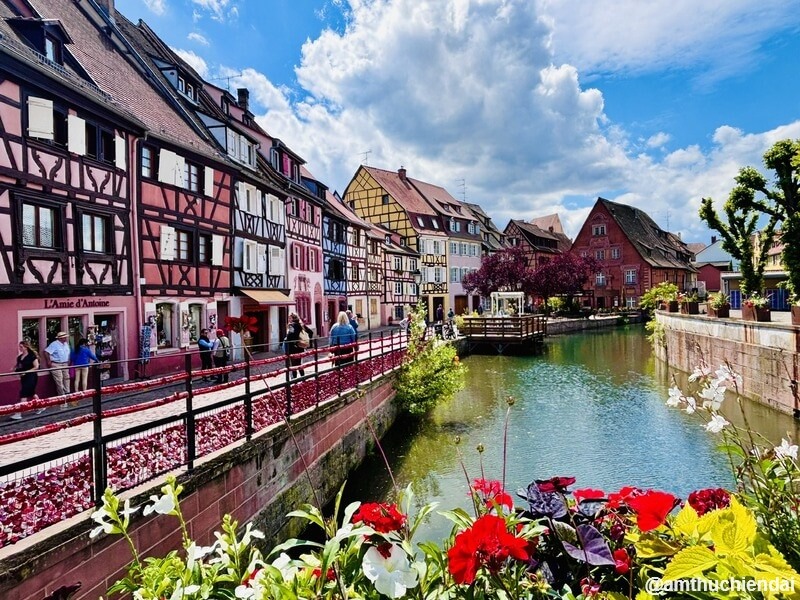
Read More: 6 Reasons to Visit Vosges When Coming to Alsace and How to Do It
